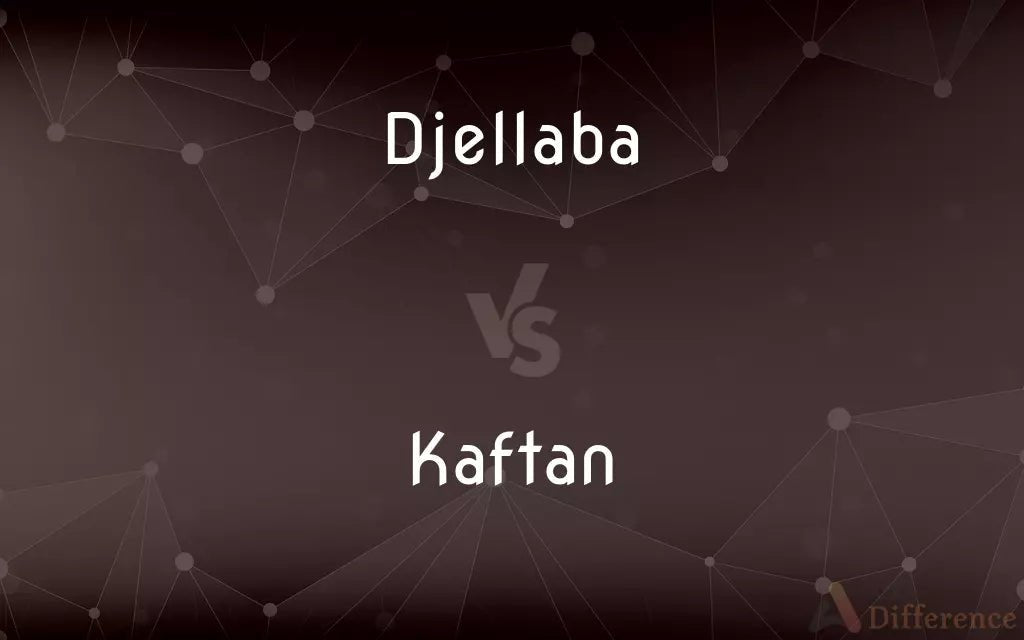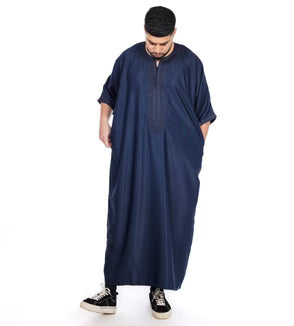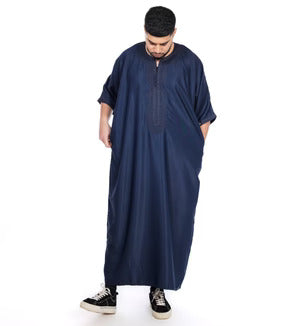Often used interchangeably, djellaba vs kaftan differs primarily in terms of their origin. While djellaba is a full-length, loose-fitting attire with full sleeves designed to be worn over simple light clothes, such as tee and shorts, as exterior modest clothing, it is a unisex robe commonly worn in the Maghreb region of North Africa and countries of Arabic origin. Djellaba is also spelled as gallabea.
On the other hand, a kaftan dress, also written as caftan, is an elegant gender-neutral dress typically designed for women to wear casually and even modified to be worn on celebrations and special occasions. Originating from the Middle East and Central Asia, delicate chiffon, silk, or cotton are the preferred choice of fabric. These outfits are designed with appropriate body fittings giving a flowy draping look, and are accompanied by big, loose sleeves that come up with half-to-full length.
Djellaba Vs Kaftan Primary Features Comparison
The unique feature that creates a fine line of difference in the debate between djellaba and Kaftan is the presence of a hood in the former. Djellabas can be worn either as an only dress or over some light clothing, while the kaftans are crafted to be worn as a single dress, particularly by women.
How to Choose Between Djellaba vs Kaftan?
Remember that context is the key whenever it comes to wearing an appropriate dress suitable to the country you’re visiting or the event you’re going to attend. As your attire is the first apparent introduction to your personality, the selection of either djellaba vs kaftan is essential as one might look just perfect for a particular occasion. And here’s how you can choose what to wear and why.
While djellaba vs kaftan is designed for both men and women, certain cultural differences make kaftan a more feminine apparel because it is often made of chiffon and pure silk, which is religiously impermissible for men of the Muslim community. In addition, the choice of embedding intricate embroidery and beading is a way to beautify the elegant couture for women.
The masculinity of djellabas and caftans is evident from the monochromatic shades, such as white, blue, or brown, which are often plain and sober in look. The sleeves are easily rolled up, which makes djellabas an everyday dress for men.
Some ‘red tape’ that you need to know before opting for either djellabas or kaftans is the level of formality of the celebration you’re going to be a part of. In general, djellaba is somewhat a more casual outfit in contrast to kaftan because the former is commonly made of wool or cotton, which is your everyday fabric choice.
A side note for dear ladies– wearing an exquisitely luxurious kaftan to a formal dinner or ceremony is enough to steal the show!
The ongoing weather changes and fluctuations should be the most important factor to consider before dressing up because how comfortable you feel in a particular outfit is crucial to determine if you should go for either djellaba vs kaftan.
A djellaba collection is particularly made with heavier fabrics as compared to kaftans, which makes them a good choice in cold and frigid temperatures. In contrast, kaftans, if made of chiffon or cotton, are wearable in warmer weather; silk kaftans feel comfier in winter compared to that in the summer season.
However, both full-length dresses can be modified with additional layering to instill a touch of modest elegance, no matter what the season is.
It is totally your choice to create a style statement of your selection that makes you feel amazing yet comfortable. For example, putting on high heels and fashionable jewelry is one of the best ways to uplift the level of your kaftan from casual to formal level. Similarly, pairing a djellaba with sneakers and a denim jacket could be your energetic winter vibe.
Final Thoughts
Djellaba vs kaftan may have originated from a simple idea of long robes resembling thobes, but the diversity of cultural preferences has made both the attires unique in their own way. Although free from gender discrimination in the past and worn over centuries by the natives of Morocco, North Africa, Middle East, and Central Asia, now there are certain salient features, such as the type of fabric and beautifying elements, that creates fine differentiations with respect to the dresses leaning more towards either male or female side, aiming to maintain and upgrade your self-effacement in the most appropriate manner.



